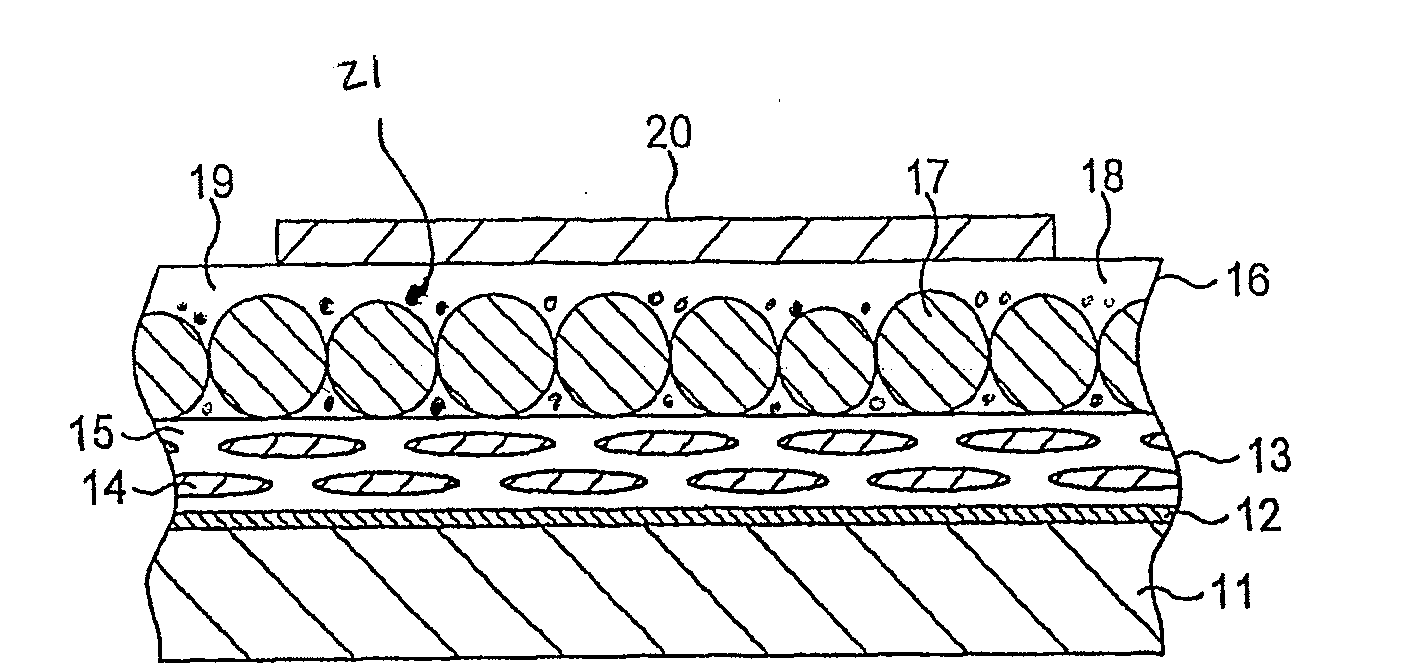Electroluminescent displays
- Summary
- Abstract
- Description
- Claims
- Application Information
AI Technical Summary
Benefits of technology
Problems solved by technology
Method used
Image
Examples
Embodiment Construction
[0034]The structure of the first embodiment of the display of the invention depicted in FIG. 1 of the accompanying drawings can be seen to be, from front to back:
[0035]a relatively thick protective electrically-insulating transparent front layer (11; the substrate);
[0036]over the rear face of the substrate 11, a very thin transparent electrically-conductive film (12) forming the front electrode of the display;
[0037]covering the rear face of the front electrode 12, a relatively thin layer (13) of LC material (14) physically-stabilised by being dispersed within a supporting polymer matrix (15);
[0038]formed directly on, and covering the rear face of, the liquid crystal layer (13), a relatively thin electroluminescent layer (16);
[0039]over the rear face of the electroluminescent layer (16), a relatively thin optically-reflective electrically-insulating layer (19) of a relatively high dielectric constant material (in the Figure this layer is shown as a seamless extension of the electrolu...
PUM
 Login to View More
Login to View More Abstract
Description
Claims
Application Information
 Login to View More
Login to View More - R&D
- Intellectual Property
- Life Sciences
- Materials
- Tech Scout
- Unparalleled Data Quality
- Higher Quality Content
- 60% Fewer Hallucinations
Browse by: Latest US Patents, China's latest patents, Technical Efficacy Thesaurus, Application Domain, Technology Topic, Popular Technical Reports.
© 2025 PatSnap. All rights reserved.Legal|Privacy policy|Modern Slavery Act Transparency Statement|Sitemap|About US| Contact US: help@patsnap.com


